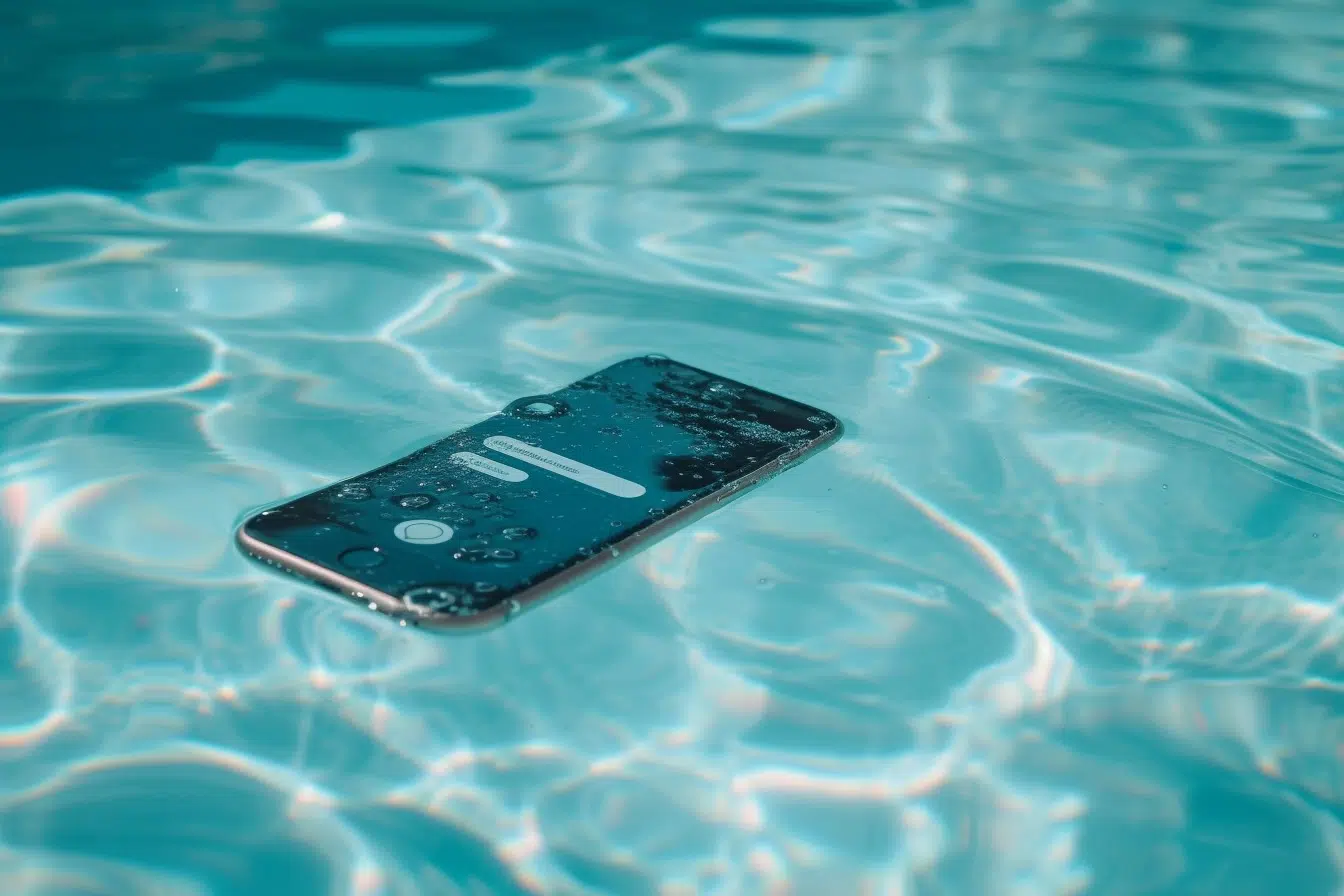Dropped your iPhone in water? Acting quickly can save your device. In this guide, we’ll show you how to remove water in iPhone, from initial steps to prevent damage to advanced drying techniques. Learn how to use tools like the Water Eject shortcut, why rice isn’t your best option, and when to seek professional repair – all the information you need for a chance to bring your iPhone back to life, safely.
Key Takeaways
Immediate action is crucial when an iPhone gets wet, including powering down the device, removing cases and the SIM tray, and using gravity to remove excess water.
Utilize the Water Eject shortcut, inspired by the Apple Watch, to expel water from the iPhone’s speakers using sound waves; ensure download and correct installation, voice activation via ‘Hey Siri’, and select the right intensity level for effectiveness without damage.
For drying a wet iPhone, silica gel packets, couscous, and silica cat litter are more effective than rice; avoid DIY repairs that might void warranty and opt for professional services if necessary, especially for complex damage.
Immediate Actions to Take When Your iPhone Gets Wet
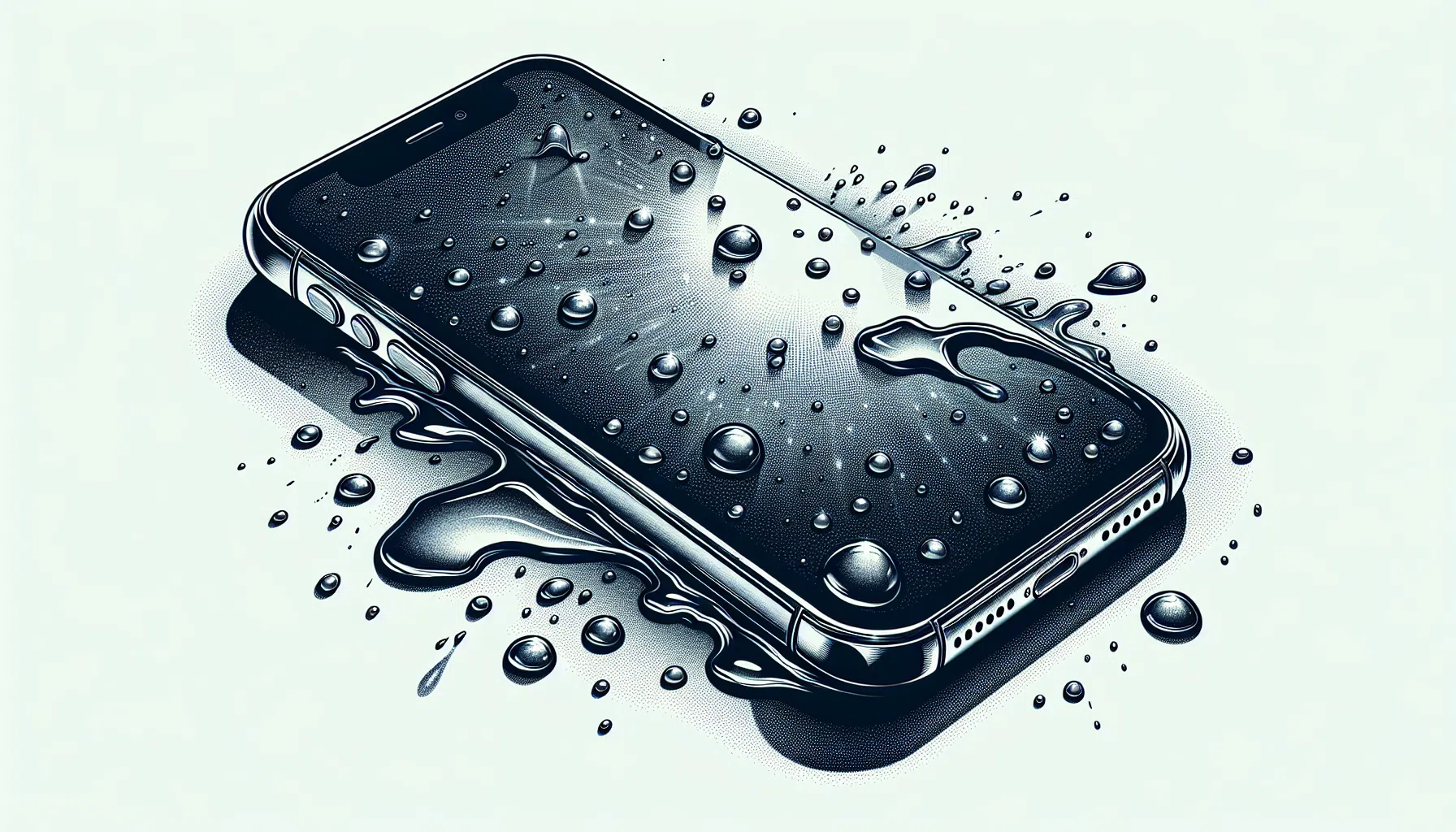
When your iPhone gets wet, every second counts. The first thing you should do is power down the device immediately to prevent further electrical damage. Disconnect any external accessories such as cases and the SIM tray to minimize the risk of trapped moisture. By taking these initial steps, you mitigate the chances of severe water damage, setting the stage for a more effective recovery process.
Next, use gravity to your advantage. Gently tap the phone with the charging port facing down to help remove excess liquid. This simple action assists in dislodging water from the iPhone’s openings, particularly the speakers and connectors. These immediate steps are crucial in protecting your device from further harm.
Power Down & Protect Your iPhone
Powering down your iPhone is the first critical step. To power off an iPhone with Face ID, you can press and hold the side button and either volume button. Once the sliders appear, you can then drag the top slider to turn it off.
For models with a Home button, press and hold the side button until the power-off slider appears, and drag the slider to shut down the device. It’s essential to disconnect all cables and not charge the iPhone until it has completely dried to avoid electrical damage.
Once the device is powered down, protect it from further harm. Remove any cases, SIM cards, and other accessories to allow better airflow and prevent moisture from being trapped inside. By taking these protective measures, you give your iPhone a fighting chance against water damage and set the stage for the next steps in the recovery process.
Wipe Away External Moisture
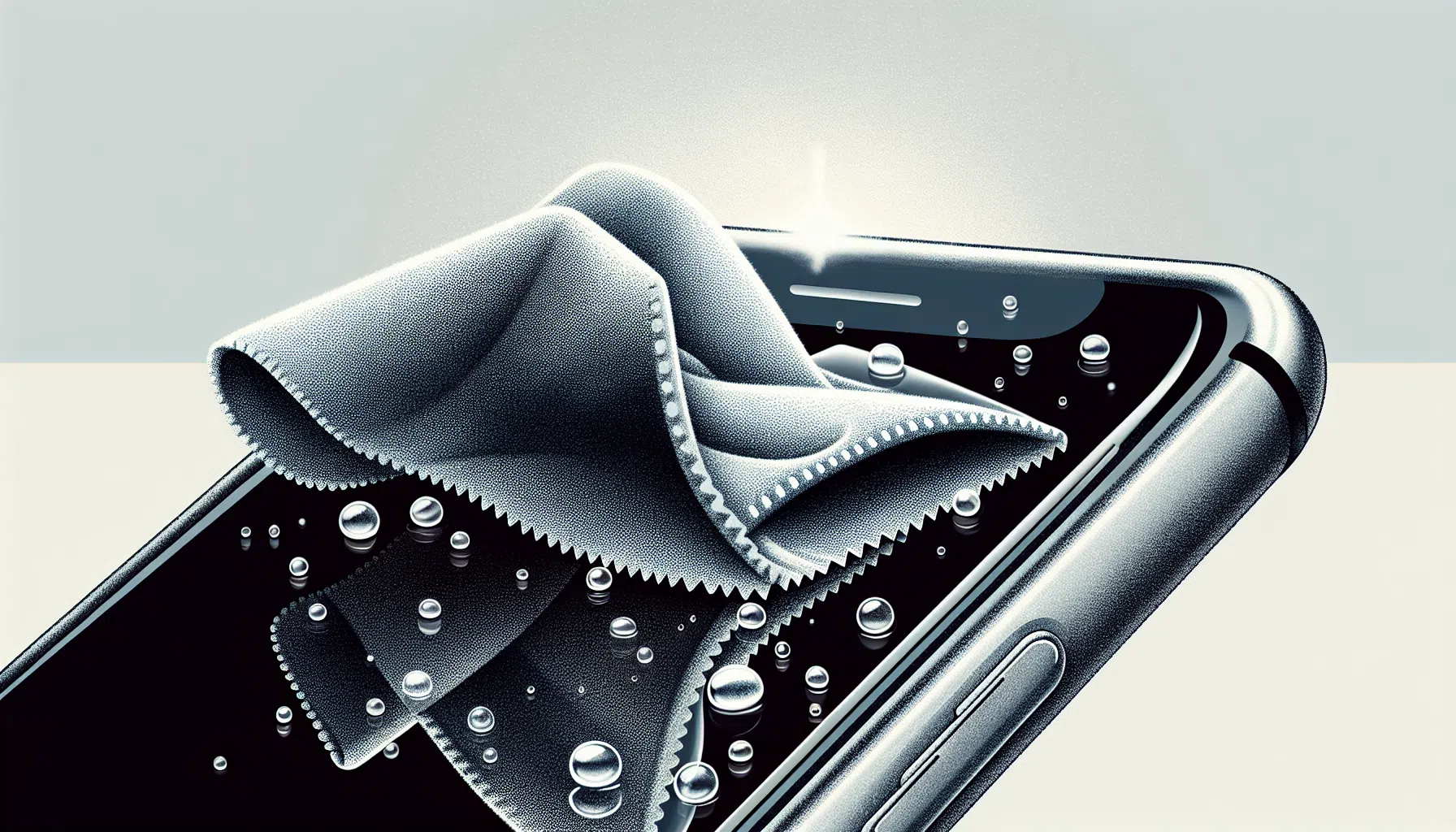
After powering down your iPhone, the next step is to wipe away external moisture. Use a soft, slightly damp, lint-free cloth to gently wipe the device.
Make sure the cloth is not too wet to avoid introducing more moisture into the phone’s openings. Focus on areas like the screen, charging port, and speakers to ensure they are free from water.
To expel water from the connectors, such as the Lightning or USB-C port, follow these steps:
Gently tap the phone against your hand with the connector facing downwards.
Avoid using external heat sources or inserting objects into the connectors, as this can cause further damage.
By carefully wiping and tapping, you help remove water from critical areas, paving the way for more advanced drying techniques.
The Water Eject Shortcut: Your iPhone’s First Aid
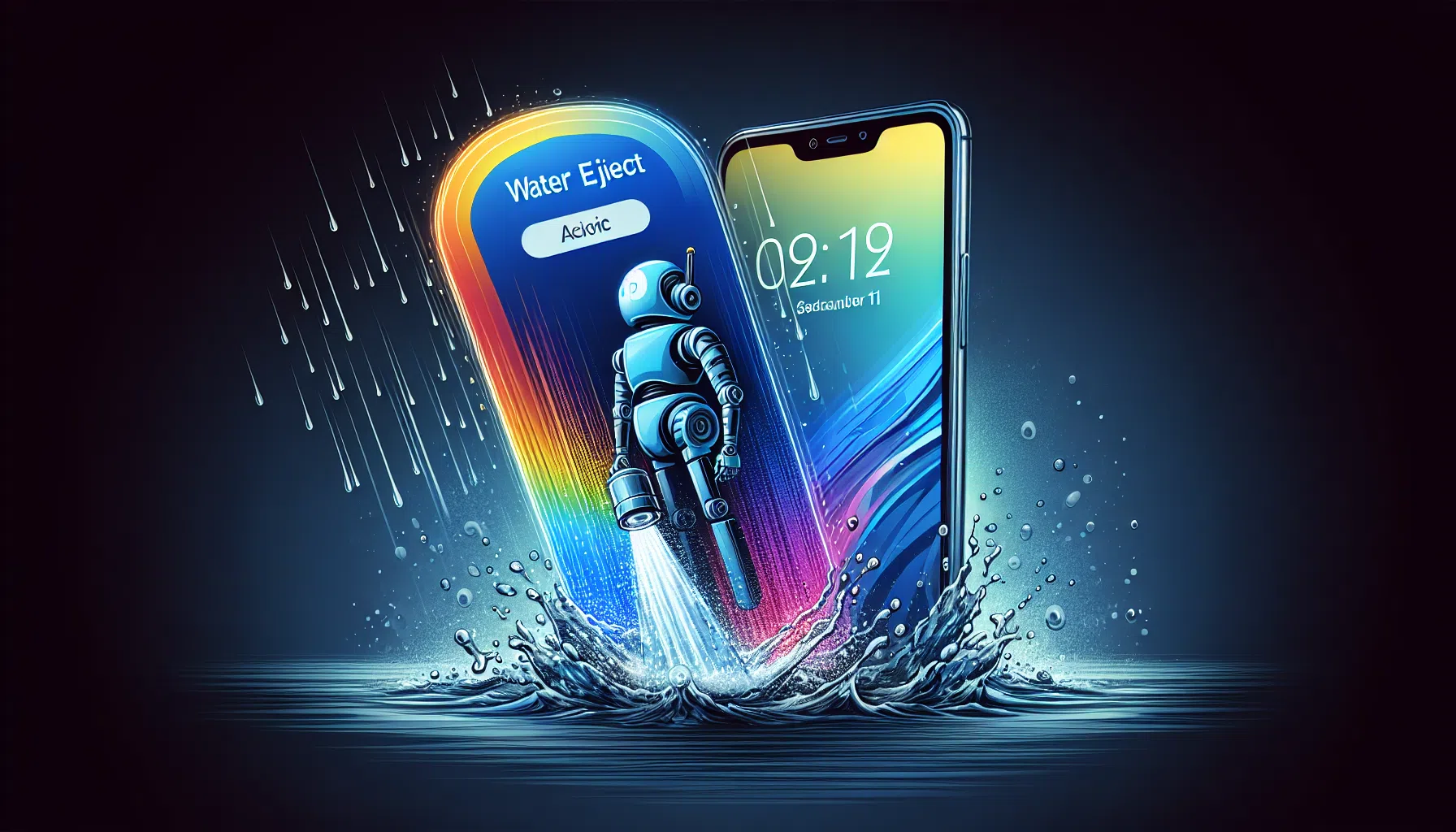
One of the most innovative solutions for water-damaged iPhones is the Water Eject shortcut. This feature uses sound waves to extract water from the iPhone’s speakers by emitting vibrations at a specific frequency. This method, inspired by similar technology used in the Apple Watch, offers a quick and efficient way to expel water without disassembling the device. Adding and using this shortcut can be a game-changer in your iPhone’s recovery process.
To get started with the Water Eject shortcut, you’ll need to:
Download and install it on your iPhone.
Once installed, you can activate it using the ‘Hey Siri’ voice command, making it a hands-free solution.
Choosing the right intensity level for the shortcut ensures the best results without causing any damage to your iPhone’s speakers.
Download & Install the Water Eject Shortcut
To download the Water Eject shortcut, follow these steps:
Visit the appropriate page on your iPhone.
Tap Get Shortcut to initiate the download.
Once the download begins, save the Water Eject shortcut to your device.
If you need assistance, follow a step-by-step tutorial available in the Shortcuts app to add and start the Water Eject shortcut.
Adding this “add shortcut” to your iPhone can be a lifesaver, especially in emergencies. By having it readily available in a pop up menu, you can quickly expel water from your iPhone’s speaker, potentially saving it from severe water damage. This proactive step can make all the difference in preserving your device.
Activate Water Eject with “Hey Siri”
Once the Water Eject shortcut is installed, activating it is as simple as using the ‘Hey Siri’ voice command. Say, “Hey Siri, run Water Eject” to start the process. Ensure you are not wearing headphones to prevent any potential harm.
This hands-free approach allows you to efficiently manage the eject water process, making it a convenient first-aid solution for your wet iPhone.
Selecting the Right Intensity Level
Choosing the appropriate intensity level for the Water Eject shortcut is crucial to avoid damaging your iPhone speakers. The shortcut generates strong air vibrations that help remove water. Select the intensity level within the shortcut that you believe will work best for your situation without causing harm to the speakers.
By carefully selecting the right level, you ensure the best results and protect your device from further damage.
Drying Techniques Beyond Rice: Silica Gel Packets & More
While the rice method is popular, it’s not the most effective solution for drying out a wet iPhone. Silica gel packets, often found in packaging to keep products dry, are a superior alternative.
These packets contain microscopic pores that attract and hold water molecules, making them highly effective at drawing moisture out of water-damaged iPhones. Placing your iPhone in a dry area with sufficient airflow also aids in the drying process.
Exploring alternative absorbent materials such as couscous and silica cat litter can be beneficial. These materials have better moisture-absorbing properties compared to conventional rice. By using these advanced techniques, you increase the chances of thoroughly drying your iPhone and preventing long-term damage.
Using Silica Gel Packets to Absorb Moisture
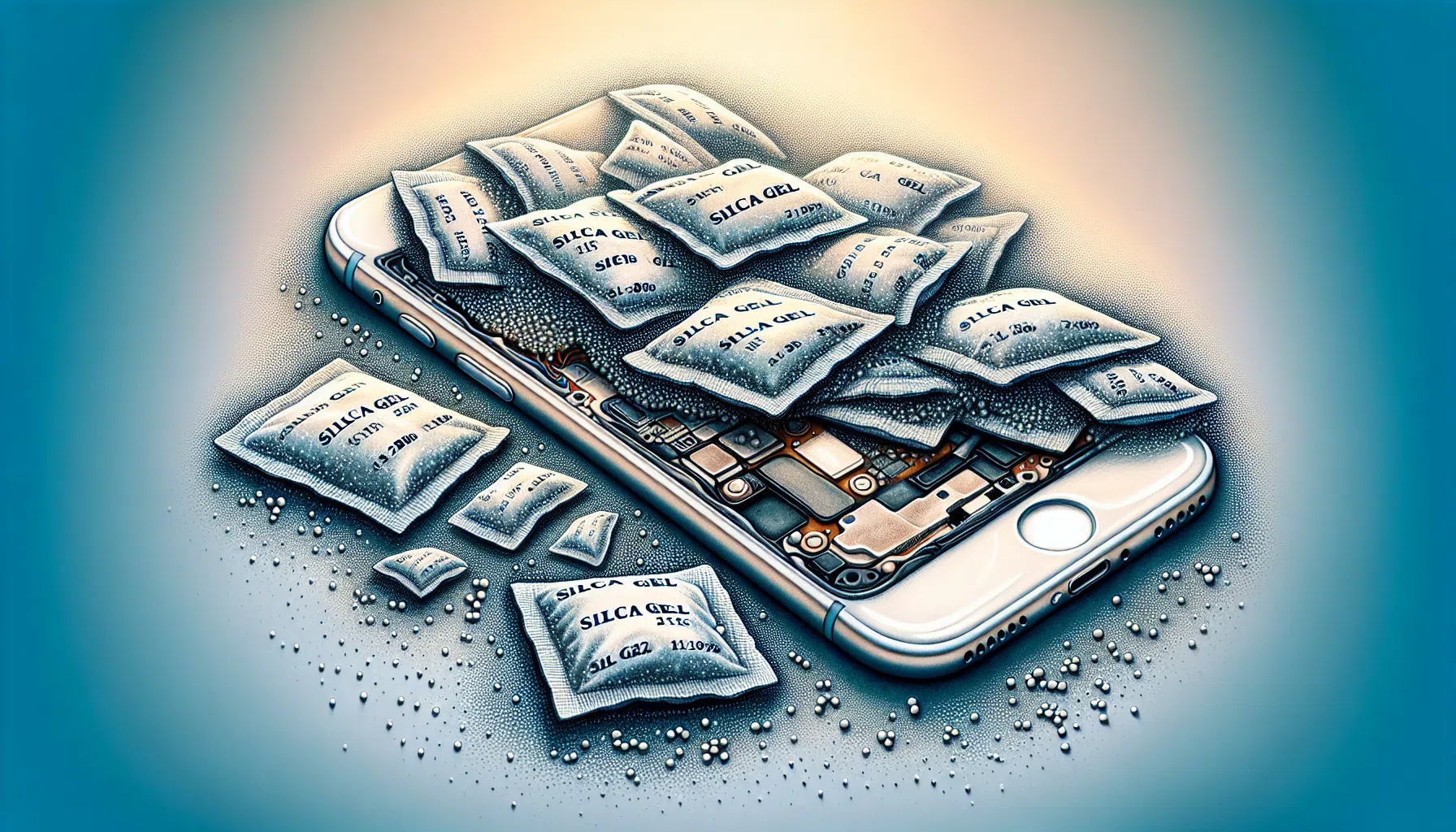
To use silica gel packets effectively, follow these steps:
Ensure your iPhone is turned off and dried externally.
Surround the iPhone with silica gel packets, especially around areas prone to moisture like the camera.
For better results, wrap the phone in a paper towel before placing it in a sealed container with the packets.
Leave the iPhone in the sealed container for at least 24-72 hours before attempting to power it back on. Silica gel can be reused by drying it out in an oven, restoring its desiccant properties, making it effective even in environments with salt water.
This method provides a reliable way to absorb moisture and protect your iPhone from further damage.
Alternative Absorbent Materials
Apart from silica gel, other effective absorbent materials include couscous and silica cat litter. These materials have superior moisture-absorbing properties compared to conventional rice, making them preferable for handling wet iPhones. Avoid using materials like conventional cat litter, oats, chia seeds, and uncooked white rice, as they can leave residues and potentially cause more harm.
Professional Help vs. DIY: Weighing Your Options
Deciding between professional help and DIY solutions for water-damaged iPhones can be challenging. DIY attempts, such as using high heat sources like hairdryers, can cause further issues.
If you cannot resolve the water damage yourself, it’s advisable to seek professional repair at an Apple Store or certified service center. Holders of the AppleCare+ plan may find professional repair more cost-effective, as liquid damage is categorized as an accidental incident.
Understanding the warranty coverage and risks associated with DIY repairs can guide your decision. Here are some key points to consider:
Apple’s standard warranty does not cover liquid damage, and DIY repairs can void the warranty.
The cost of repair or replacement varies.
Seeking professional help ensures your iPhone is handled by experts, increasing the likelihood of a successful recovery.
Opening Up Your Device: How to Remove Water in iPhone
Opening up your iPhone to remove extra moisture is a viable option, but it’s not recommended for the average user. Each iPhone model has unique components and requires specific tools and techniques to open safely. Without the right expertise, you could easily cause more harm than good to your device.
If you’re determined to try this yourself, look up detailed guides online for your specific iPhone model. However, for most people, it’s safer to use alternative moisture removal methods or seek help from professional repair services.
Understanding Warranty Coverage & Risks
Apple’s warranty explicitly excludes services related to liquid damage for iPhones. Attempting DIY repairs can void your warranty, leading to higher costs and risks if the device is further damaged. The cost of repair or replacement for a water-damaged iPhone depends on the extent of damage and the model.
If you have AppleCare+, liquid damage is considered accidental, which can influence your decision to opt for professional repair. It’s crucial to weigh these factors before attempting any DIY repairs, as professional help might be the safer and more economical choice.
When to Visit an Apple Store or Authorized Service Provider
If your iPhone’s liquid contact indicators have changed color, it’s a sign of significant liquid exposure. Additionally, damage to critical components like Face ID requires professional attention. Apple’s repair policy often involves replacing the entire device rather than repairing individual components.
If you notice such issues, schedule a consultation with Apple Support or visit an authorized service provider for a detailed assessment and appropriate action.
Long-Term Care: Preventing Future Water Damage
Preventing future water damage to your iPhone is equally as important as knowing how to handle it when it happens. Investing in high-quality waterproof cases and accessories can significantly enhance your iPhone’s protection against water damage, especially during activities where it might be exposed to moisture.
These cases are designed with built-in seals and covers for ports and speakers, ensuring water stays out while maintaining full functionality.
Some high-quality waterproof cases and accessories to consider are:
Lifeproof FRĒ Series Waterproof Case
Catalyst Waterproof Case
OtterBox Preserver Series Waterproof Case
JOTO Universal Waterproof Case
Mpow Universal Waterproof Case
By using these waterproof cases and accessories, you can have peace of mind knowing that your iPhone is protected from water damage.
In addition to protective accessories, adopting best practices for keeping your iPhone dry can greatly reduce the risk of water damage.
Avoid using your iPhone during activities where it could be submerged or come into contact with water, such as swimming or bathing. Being mindful of environmental conditions, like avoiding extreme heat in saunas or steam rooms, also helps maintain your device’s integrity.
By combining protective gear with cautious habits, you can ensure your iPhone remains safe from water damage in the long run.
Investing in Waterproof Cases and Accessories
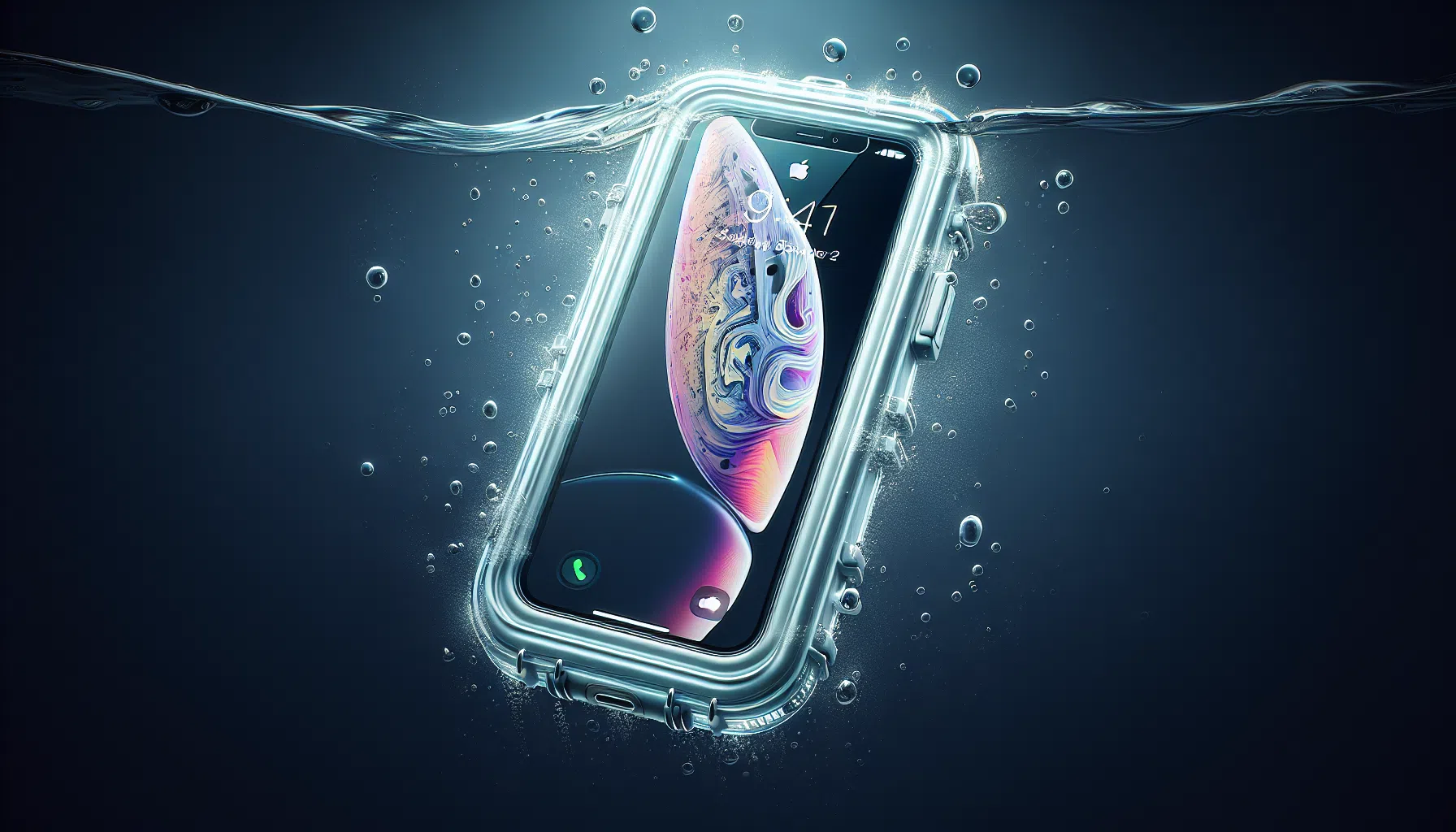
Using a waterproof case or pouch when near water bodies or engaging in water-related activities is a practical step to prevent accidental water accidents to iPhones.
These accessories are designed to shield your device from liquid ingress, providing peace of mind whether you’re at the beach, pool, or simply caught in the rain. Ensuring your iPhone is equipped with the right protective gear can save it from potential water damage and extend its lifespan.
Moreover, investing in accessories like waterproof headphones and cables further enhances your iPhone’s protection.
These accessories are specifically designed to resist water, ensuring that even if your device is exposed to moisture, it remains safe. By adopting a proactive approach and equipping your iPhone with waterproof accessories, you can enjoy your favorite activities without worrying about water damage.
Best Practices to Keep Your iPhone Dry
Practicing caution around water is one of the best ways to keep your iPhone dry. Here are some tips to help you protect your iPhone from water damage:
Avoid bringing your iPhone into environments where water exposure is high, such as bathrooms or kitchens.
Always use waterproof cases when near water.
Regularly check your iPhone’s cables and connectors for damage and replace them as needed to prevent unexpected water ingress.
By being mindful of these practices, you can significantly lower the chances of water damage and ensure your iPhone remains in optimal condition.
Additionally, it’s important to stay within the suggested temperature ranges for your iPhone to avoid damage from extreme conditions.
By combining these best practices with the use of waterproof accessories, you can effectively prevent water damage and maintain your device’s longevity and performance.
Summary
In summary, protecting your iPhone from water damage involves immediate actions, innovative solutions like the Water Eject shortcut, and advanced drying techniques. Weighing the pros and cons of professional help versus DIY repairs is crucial, as is investing in protective accessories and adopting best practices to keep your device dry.
By following these guidelines, you can not only save your iPhone from water damage but also extend its lifespan. Remember, prevention is key—equip your iPhone with the right tools and stay cautious around water to ensure it remains safe and functional.
Frequently Asked Questions
What should I do immediately after my iPhone gets wet?***?
After powering down your iPhone and disconnecting all accessories, gently tap the device with the charging port facing down to remove excess water. It’s important to act quickly and avoid turning it on.
How does the Water Eject shortcut work?***?
The Water Eject shortcut works by using sound waves emitted at a specific frequency to expel water from the iPhone’s speakers. It helps remove water from the device to prevent damage.
Are silica gel packets better than rice for drying my iPhone?***?
Yes, silica gel packets are better than rice for drying your iPhone because they have microscopic pores that attract and hold water molecules, providing a more effective drying environment.
Should I attempt DIY repairs for my water-damaged iPhone?***?
It’s not recommended to attempt DIY repairs for water-damaged iPhones as it can void the warranty and cause further damage. Seek professional help, especially if you have AppleCare+.
How can I prevent future water damage to my iPhone?***?
To prevent future water damage to your iPhone, consider investing in high-quality waterproof cases and accessories, and be cautious when using your phone in water-prone environments. Developing careful habits around water can also help protect your device.

